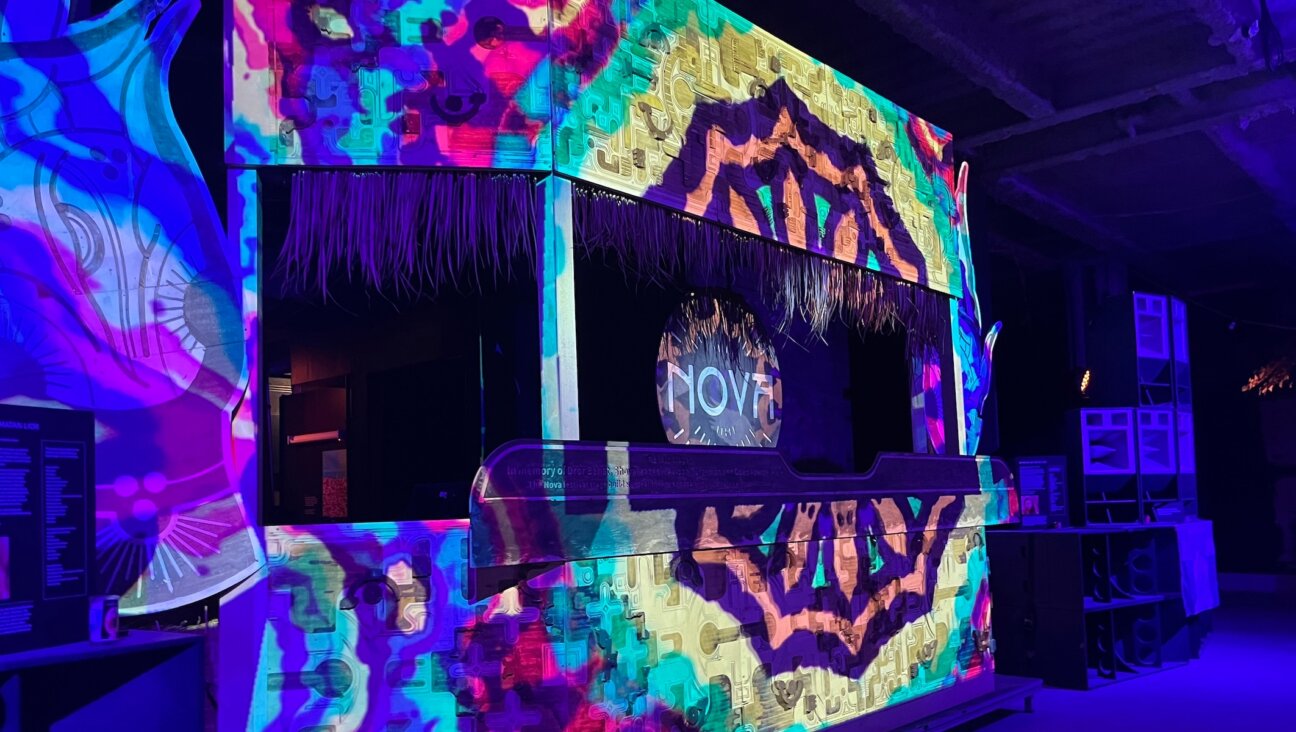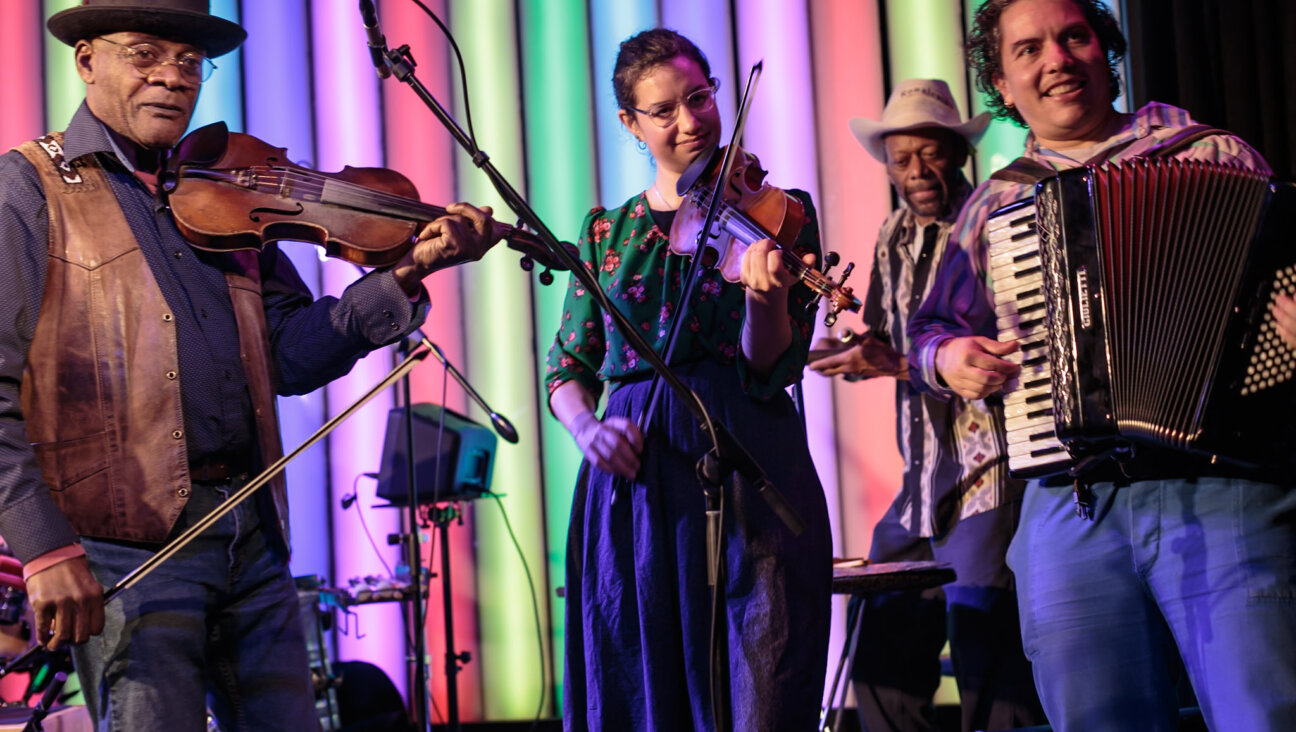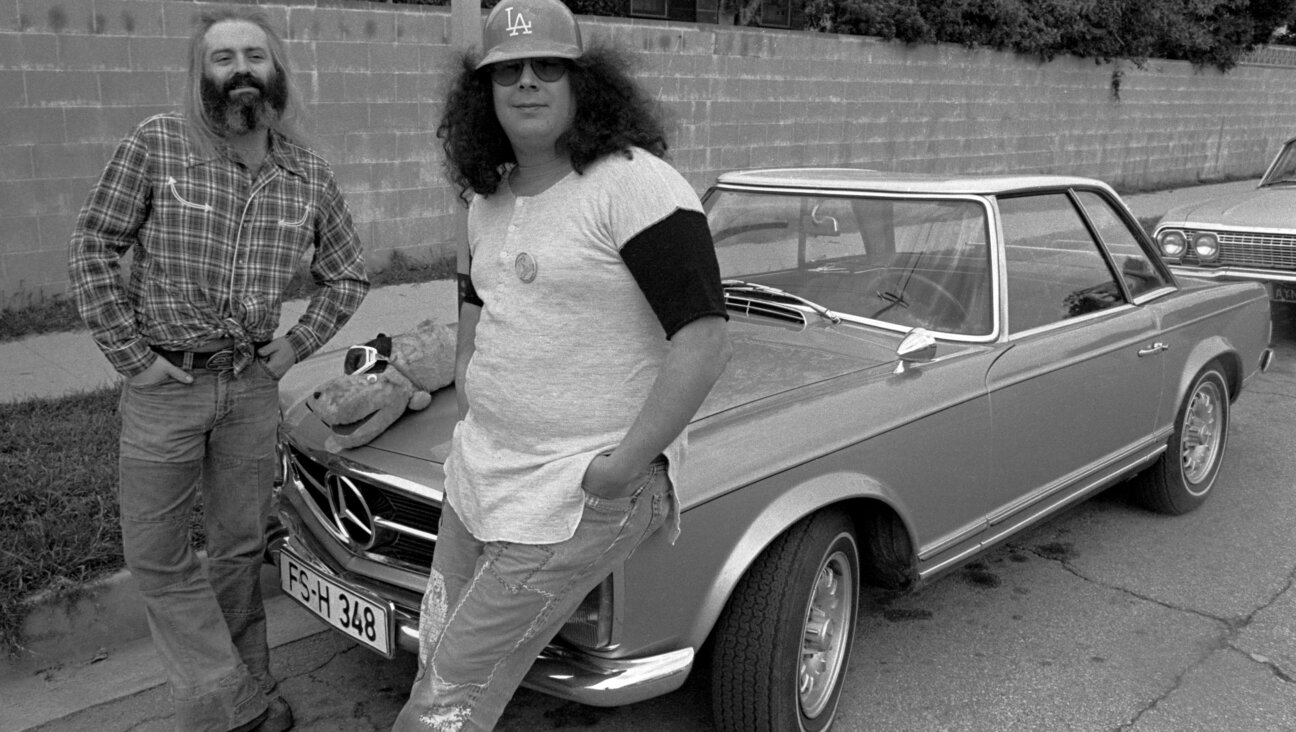Jewish Life Under the Microscope
Video can be a harsh, unforgiving and literal medium. But Israeli artist Michal Rovner’s work is refreshingly distinct from much of the contemporary crop of edgy video art that is designed to offend and upset. In Fields, her current exhibit at the Tel Aviv Museum of Art, she has transformed the medium into a subtle and sensual instrument for the exploration of intangibles: time, negative space, language and the like. The exhibit, organized by the Jeu de Paume in Paris in partnership with the Tel Aviv Museum, proves that she is a prodigiously talented artist with a keen and sensitive vision.
As Israel’s representative to the 2003 Venice Biennale, Rovner achieved crossover success in the international art world. Last year she was commissioned to conceive and execute a permanent video installation re-creating vanished Jewish life in prewar Europe at the newly designed Yad Vashem. The memory of that installation lingers, and Rovner’s new exhibit in Tel Aviv proves haunting, as well, though for entirely different reasons.
Culled from work previously displayed in Venice and Paris, and including some new pieces from her travels to Kazakhstan, the Tel Aviv exhibit consists of large-scale video installations organized into various sections, by subject. Some are seen in darkened rooms and others in spare display cases, sometimes accompanied by carefully engineered audio tracks.
For the most part, her raw materials are digitally reprocessed film and video images depicting rows of people reduced to Lilliputian proportions. The images are then gently animated and discreetly projected onto a variety of archaeological and architectural surfaces. In one room we might encounter them flickering on ancient-looking stone. Later, we come upon these same neat rows of human figures carpeting the interior of a room from floor to ceiling, marching endlessly in a space with no borders toward an unknown destination, or projected onto Petri dishes as DNA helices that are spiraling into a kaleidoscopic infinity.
Trudging along in groups, her figures are mysterious and solitary inhabitants of an indistinct landscape. One is reminded of insects and other forms of life that inhabit the periphery of our consciousness. Curiously, though, rather than diminishing the subjects she has filmed, Rovner grants the viewer a fresh perspective that enhances and deepens our appreciation of their humanity. Although hers is an anthropocentric view in which the details of personality and appearance are largely erased, her figures retain a dancer’s sense of dignity and grace. It is the protean human condition that is emphasized here rather than individual identity. (Rovner, in fact, began life as a dancer and there’s a distinct sense of choreography about her work — both in the subject matter and in the complex fashion in which her pieces are constructed.)
In a nod to her study of Wittgenstein, Rovner’s work also speaks to the futility of communicating subjective experience. Though they appear to be text, her human images are, in reality, hieroglyphics; they are not literature but semiotics, and though we
think we can “read” them, they are indecipherable.
The section of the exhibit titled “In Stone” is the most lyrical and elegant of the various sections that constitute Fields. Combining primitive stone and modern video images, Rovner has created a kinetic archaeological experience with simultaneous allusions to the past and to the present. Although she tends to shun literal spatial references, an installation titled “Tablets,” consisting of two large rectangular stones in a desertlike setting, powerfully evokes the tablets containing the Ten Commandments. Yet, the “text” that is projected (her army of swaying, abstracted figures) cannot be decoded. It does not instruct; rather, its cipherlike “letters” sometimes assume the pose of questions marks. This, too, is a type of revelation, but of the sly and subversive kind.
Further on, the Petri dish images strike one as a deliberate inversion of historical experience. With the invention of the microscope 400 years ago, entire new worlds were opened up to observation, including the very components of physical existence. In taking life-size images of human beings and reducing them to microscopic scale, Rovner reminds us that for all that is now visually accessible, somehow we have lost the ability to really see humans as individual organisms; they have become mass produced and replaceable, consumers as commodity.
In Rovner choosing to locate her forms in laboratory containers, there is also a disquieting suggestion of a sinister force controlling their movements. We sense how easily exploited they are in larger corporate and scientific schemes. These hapless humans are forever chained to one another, dancing their carefully choreographed dance; they may feel free, but — viewed from on high (in this case, they are shot from a bird’s eye perspective) — they feel manipulated and frighteningly vulnerable.
There is also a political undertone to these images. The fields inhabited by these human brushstrokes are deliberately lacking in defined borders; even within the Petri dishes, they gyrate toward the center, never the periphery. This de-emphasis of perimeter is no accident. To an Israeli, the subject of borders is fraught but unavoidable. Unlike her 2002 show at the Whitney Museum, in which she directly tackled the issue in a video installation about the Lebanese border, one feels in this exhibit Rovner’s desire to break out of the parochial — the specifics of geography, religion or ethnicity — so that she can distill what is timeless and universal.
But one senses, above all, the artist’s preoccupation with process rather than with result. Rovner’s endless examination of a particular subject, her painstaking and repeated reworking of film images, and her subjects’ ceaseless peregrinations are of more immediate interest to her than any overt or explicit political message. Even the most literal of her subjects in the current exhibit, the oil fields of Kazakhstan (to which she was initially drawn for their evocation of resources exploited for political and economic expediency), are ultimately reduced to abstractions of movement, color and compositional flux. The energy coursing, invisible, beneath the ground rather than the drilling machines above ground is, finally, what interests her.
Rovner is a very cerebral artist who uses her modern tools in a startlingly old-fashioned way: to get us to think. This remarkable exhibit invites us to meditation, not action; it inspires inquiry, not answers. And it proves Rovner to be a visual poet of the first order.
















